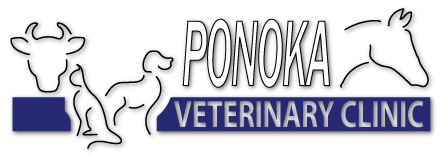Library
-
This handout outlines the use of disease-modifying osteoarthritis drugs (DMOADs) in cats, specifically the use of polysulfated glycosaminoglycans (PSGAGs). The rationale for their use, potential side effects, and treatment expectations are explained.
-
This handout outlines the use of disease-modifying osteoarthritis drugs (DMOADs) in dogs, specifically the use of polysulfated glycosaminoglycans (PSGAGs). The rationale for their use, and their dosing regimen are explained.
-
This handout explains juvenile cellulitis (also called Puppy Strangles) in puppies. Characterized by a sudden swelling of the face and muzzle, it can be confused with an allergic reaction or skin infection. The clinical signs are discussed, as well as diagnostic and treatment recommendations to resolve the condition should it occur.
-
A keratoma is a rare benign tumor of the inner layer of keratin-producing epidermal hoof wall cells that forms inside a horse's foot. As the tumor slowly grows, it expands and separates the hoof wall laminae, causing pain and lameness.
-
The lacrimal duct is part of the nasolacrimal system, a series of narrow tubes that allow tears to drain from the eye into the nose and mouth. This duct can sometimes become blocked or fail to develop properly, resulting in tears overflowing and potentially staining the face below the eye. The clinical signs, diagnosis, and treatment options for the condition are explained in this handout.
-
The lacrimal duct is part of the nasolacrimal system, a series of narrow tubes that allow tears to drain from the eye into the nose and mouth. This duct can sometimes become blocked or fail to develop properly, resulting in tears overflowing and potentially staining the face below the eye. The clinical signs, diagnosis, and treatment options for the condition are explained in this handout.
-
Laminitis is a common but still incompletely understood condition that causes varying degrees of foot pain, from the slightly pottery pony to severe life-threatening lameness.
-
Laryngeal paralysis is a condition in which the larynx can’t open all the way, causing it to partly block the trachea. It can be a congenital condition of young dogs or due to a neuromuscular disease in older dogs. Clinical signs include coughing, noisy breathing, and exercise intolerance.
-
Laser surgery is a procedure in which a beam of light energy is generated at a specific wavelength, resulting in the cutting of tissues. Laser surgery has major advantages when compared to traditional surgery, including decreased pain, decreased inflammation, and improved tissue healing.
-
Leishmaniasis is a disease caused by a protozoan parasite transmitted by sandflies and is most commonly seen in the Mediterranean, Middle East, and South and Central America. It has been reported in some parts of the United States. Clinical signs include hard skin nodules, weakness, decreased appetite, vomiting, diarrhea, and more. Diagnosis is based on travel history, clinical signs, and diagnostic testing. The goal of treatment is to resolve clinical signs. Prognosis is guarded to grave depending on the severity of the disease.

